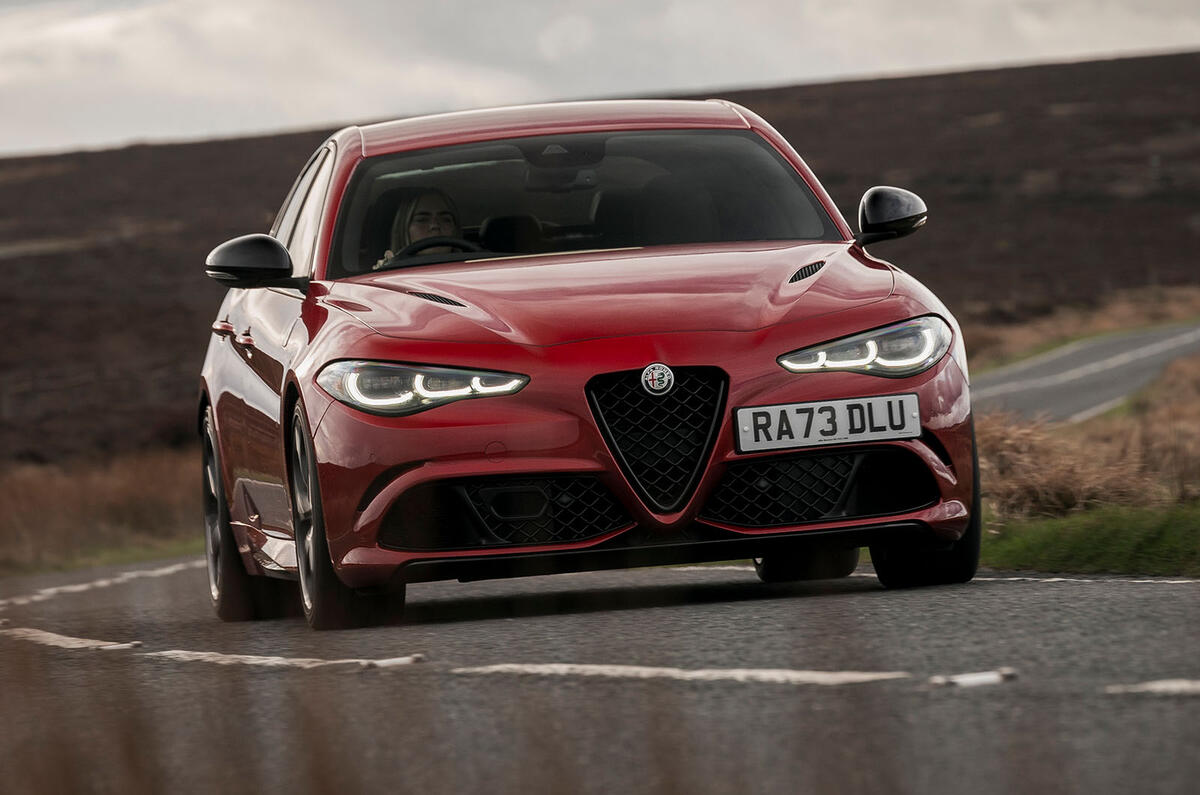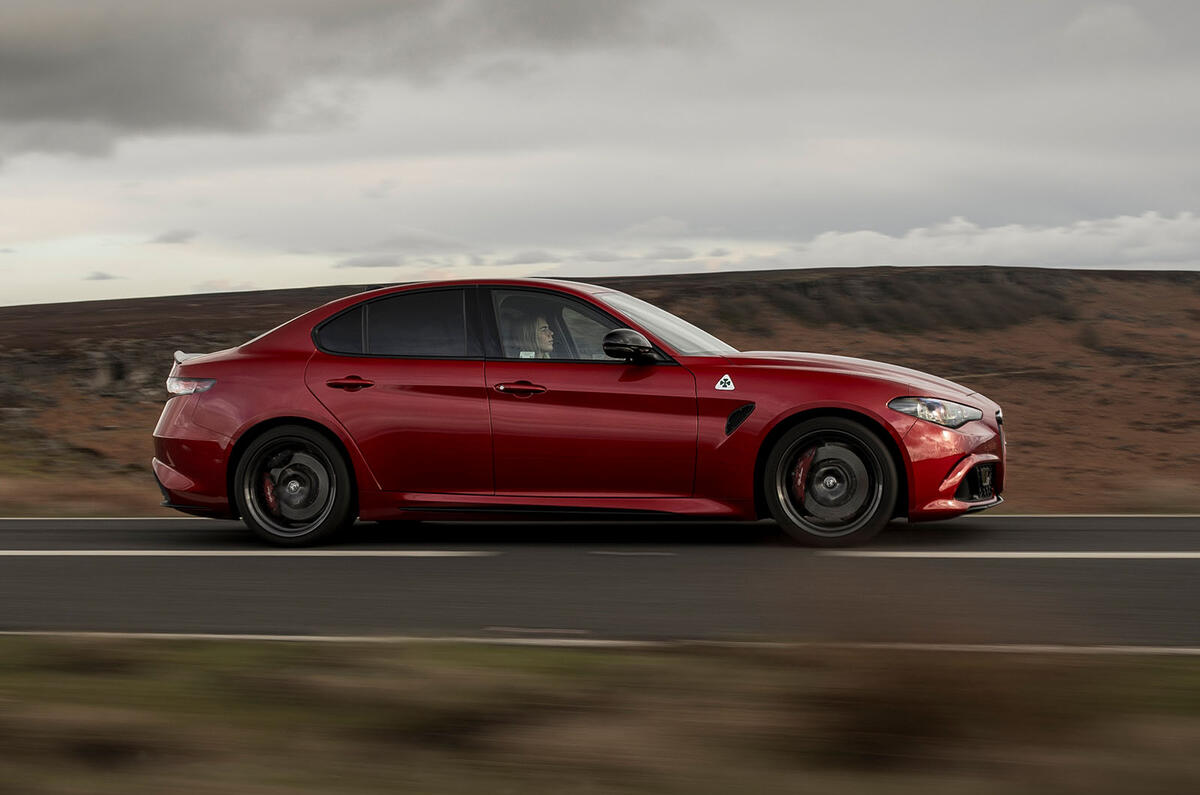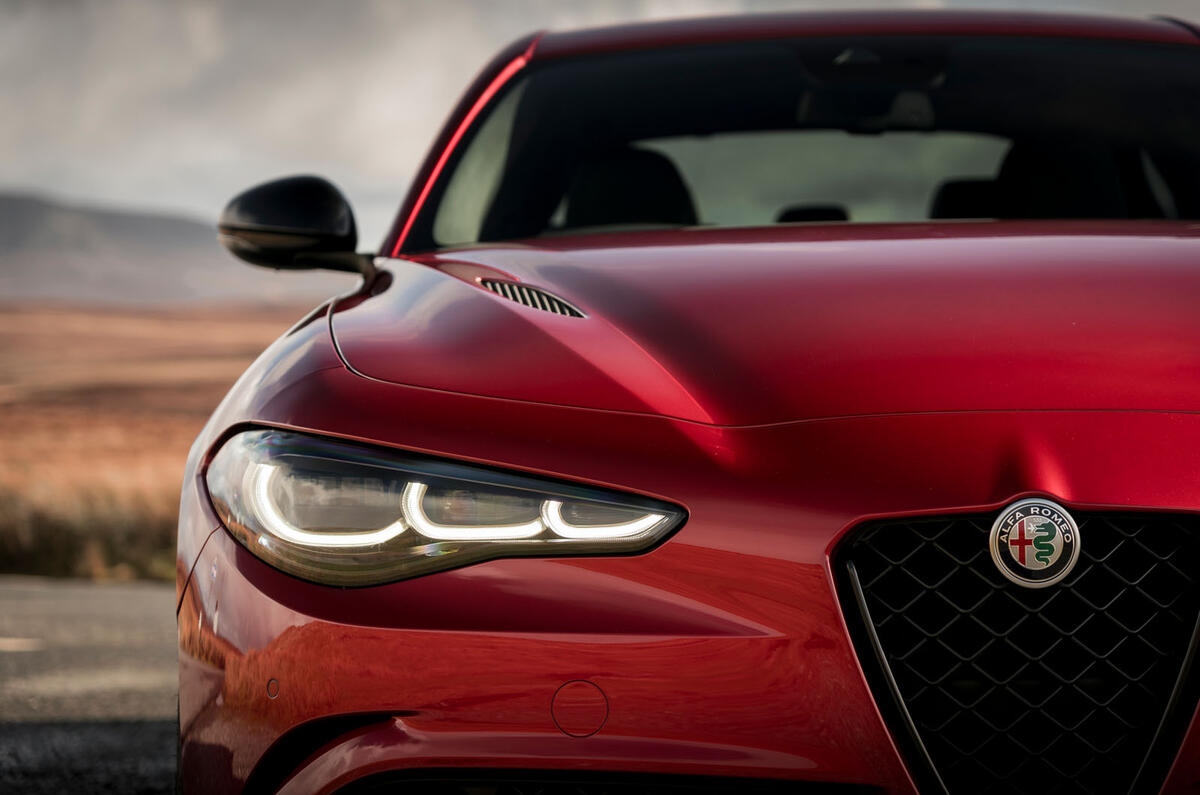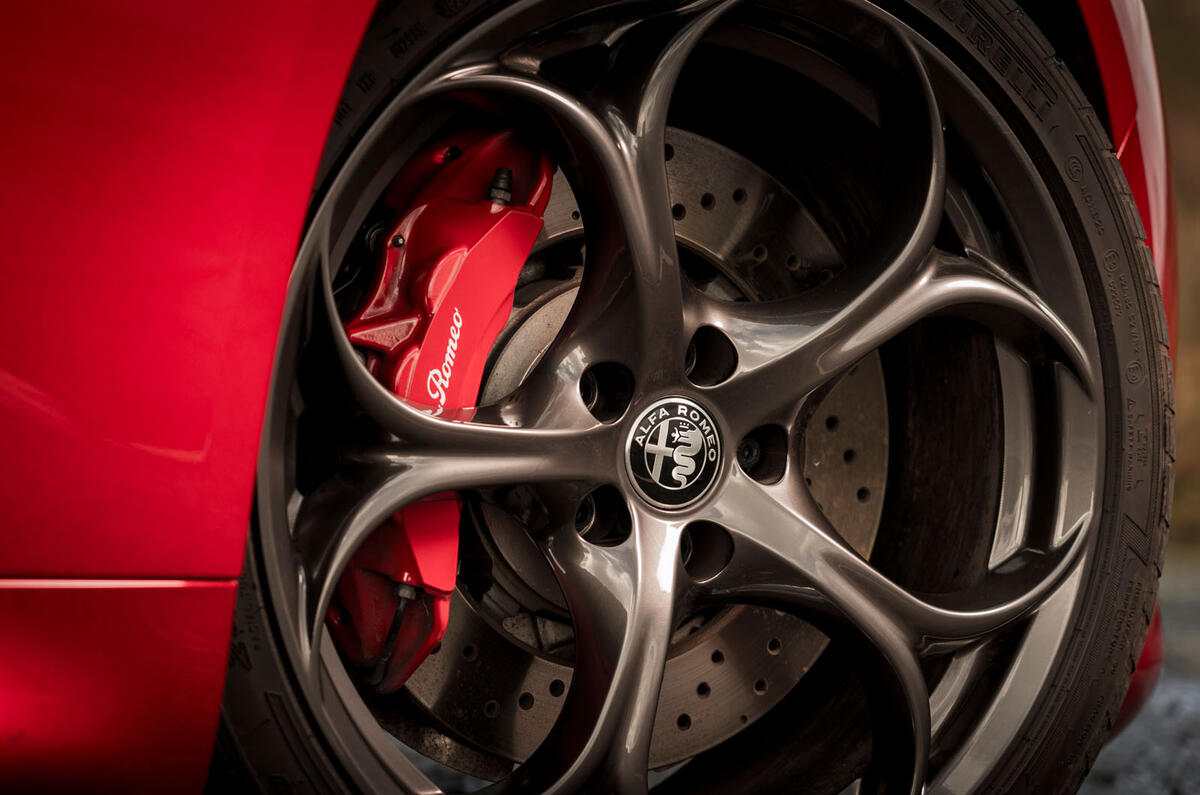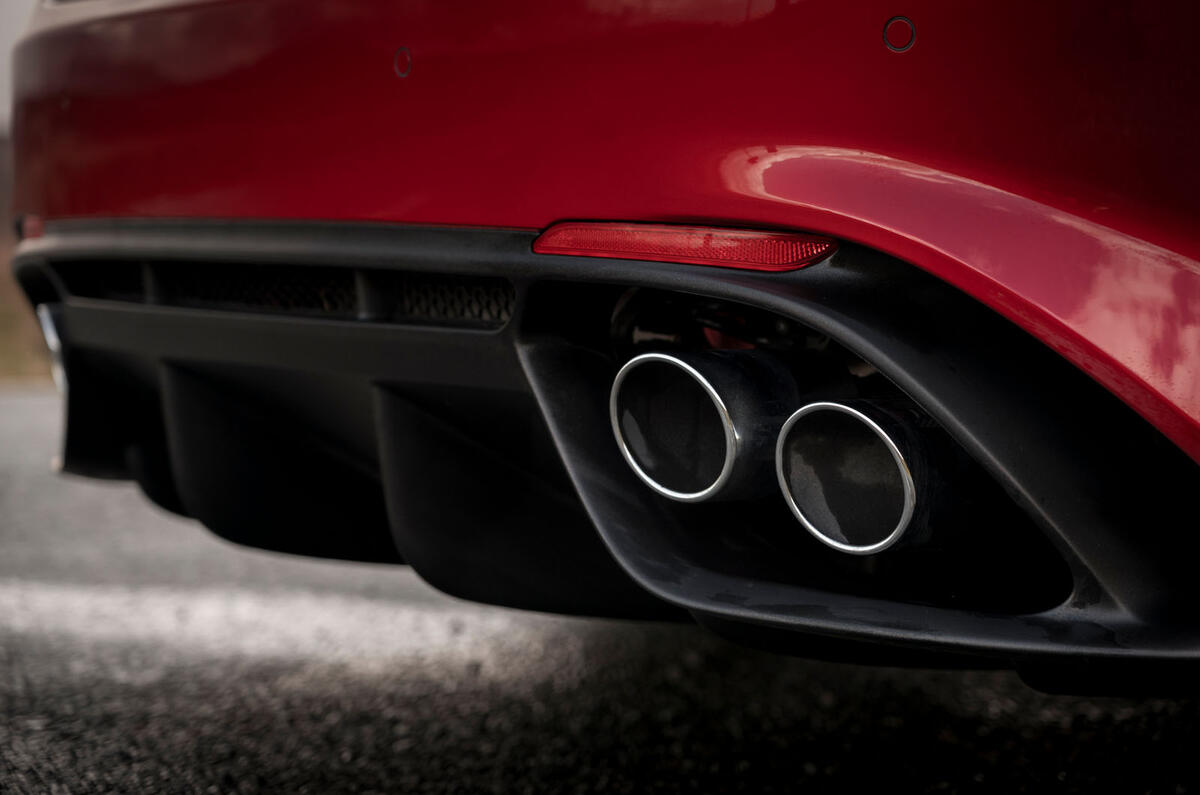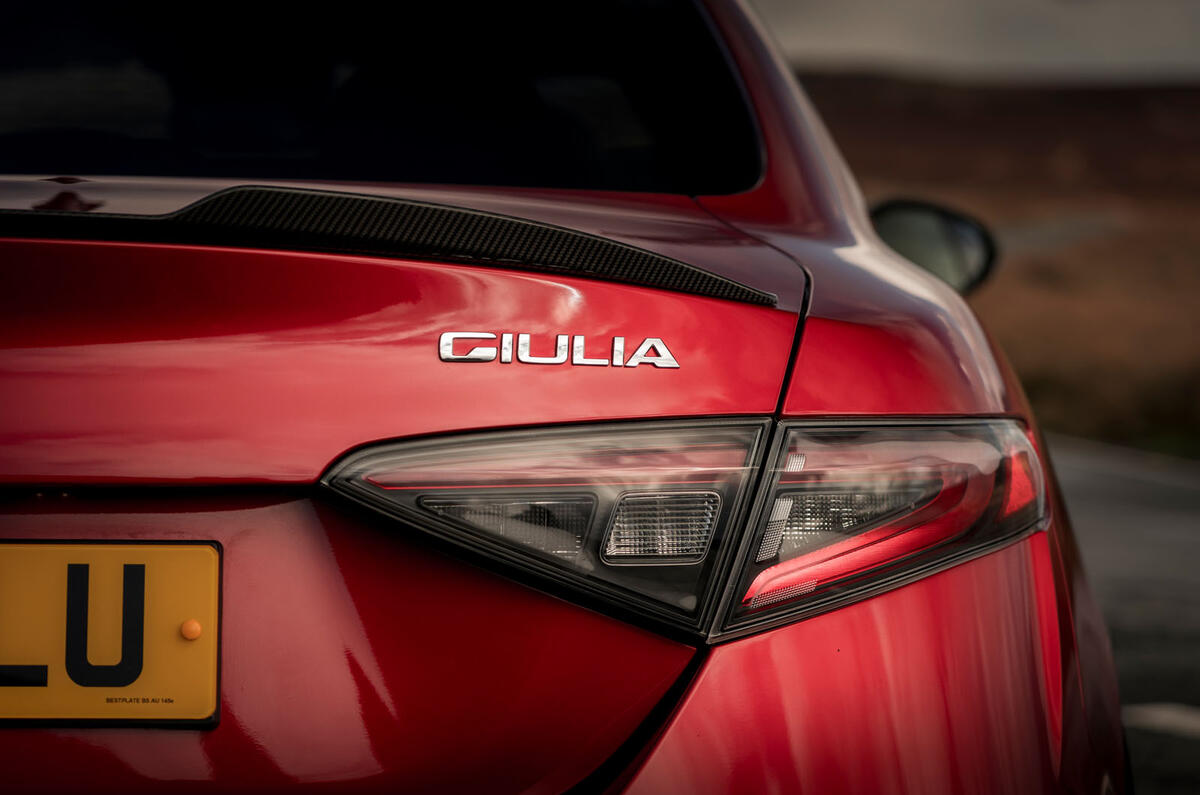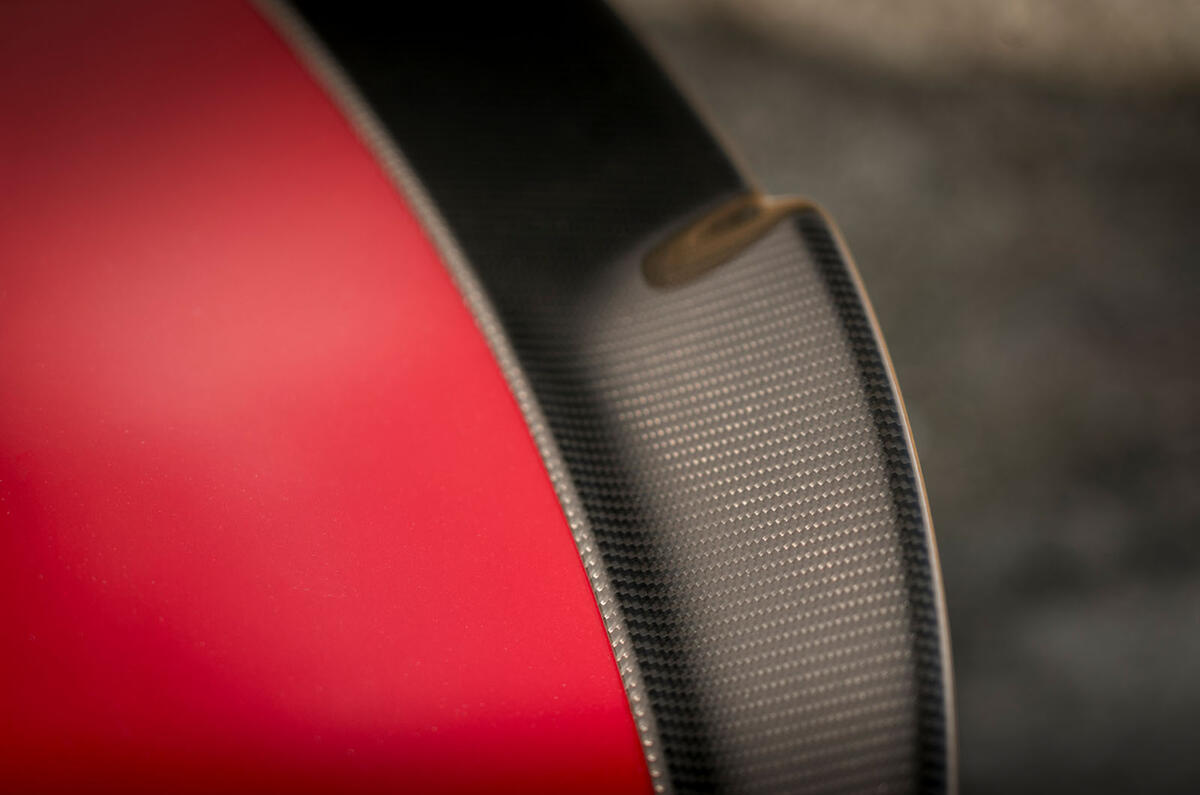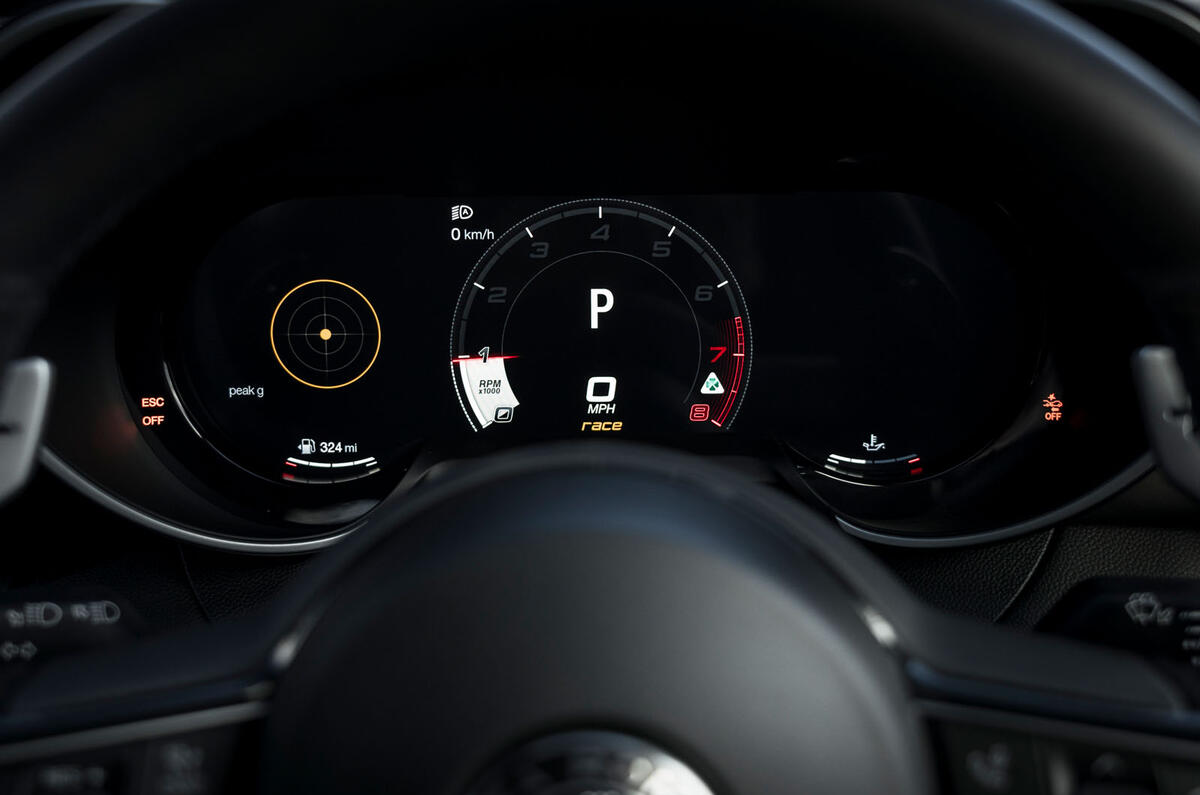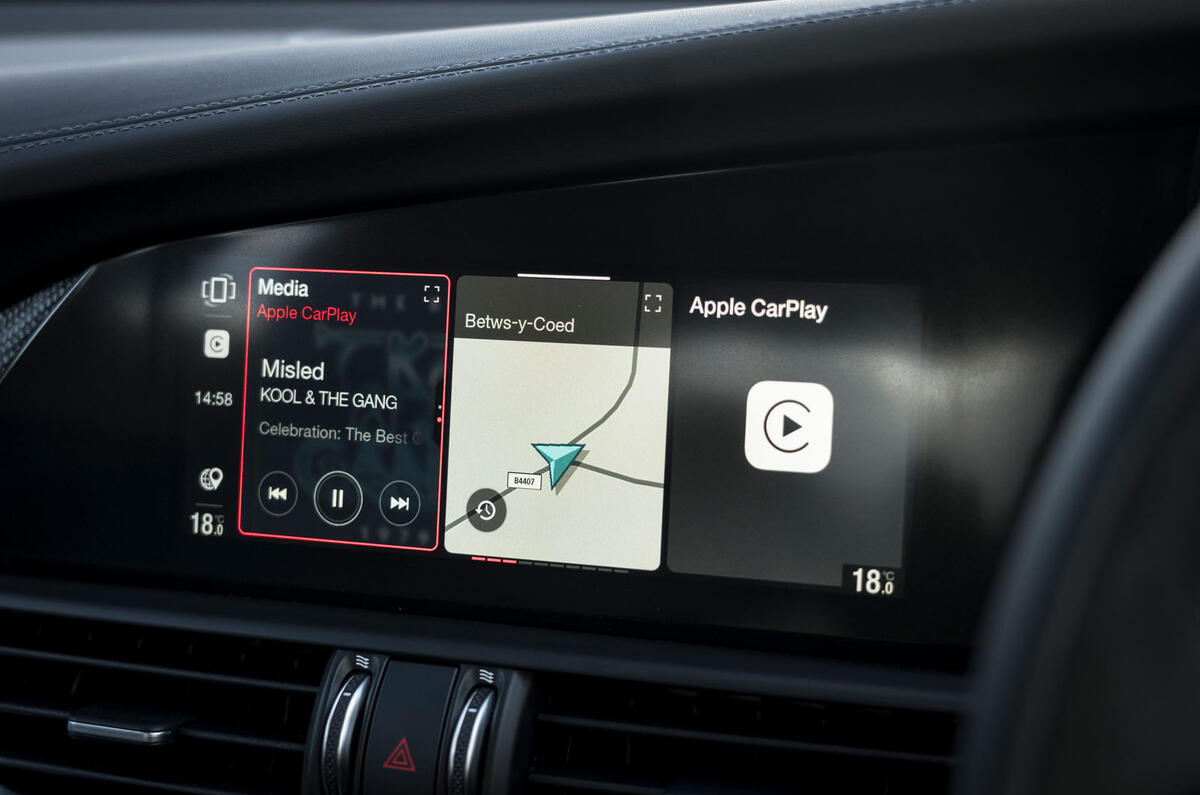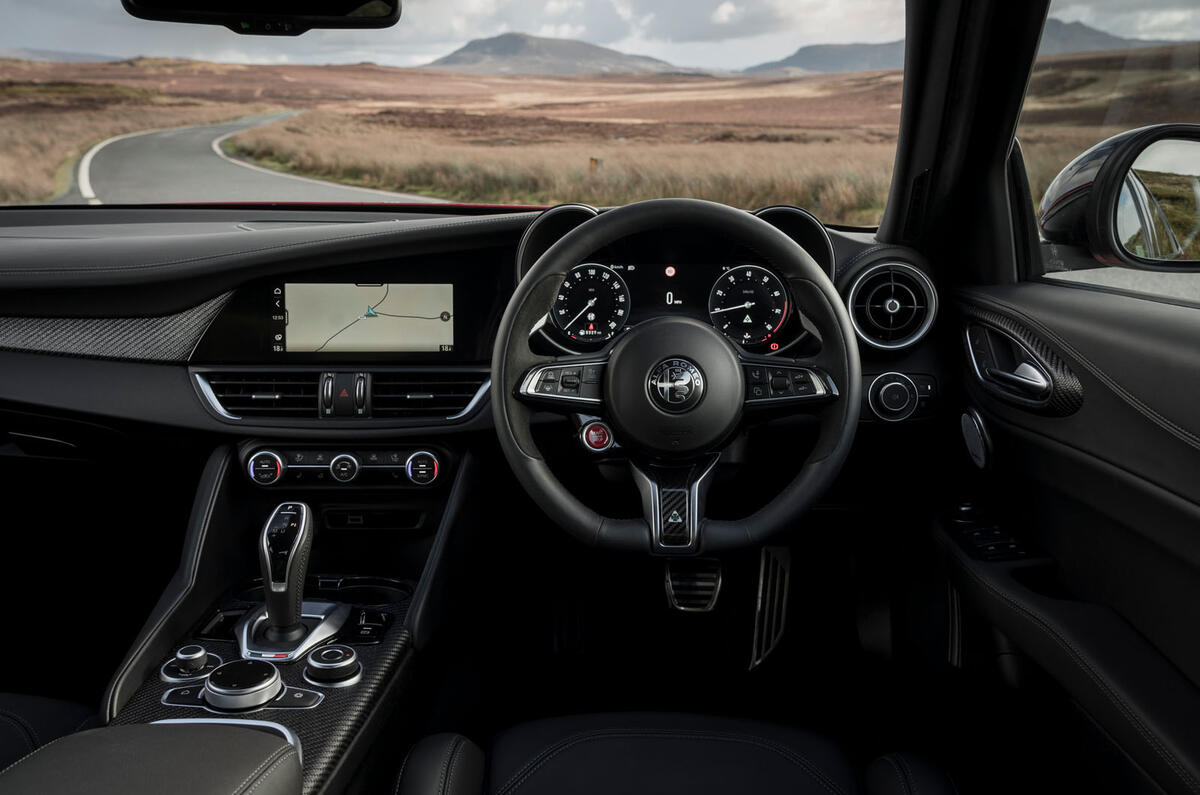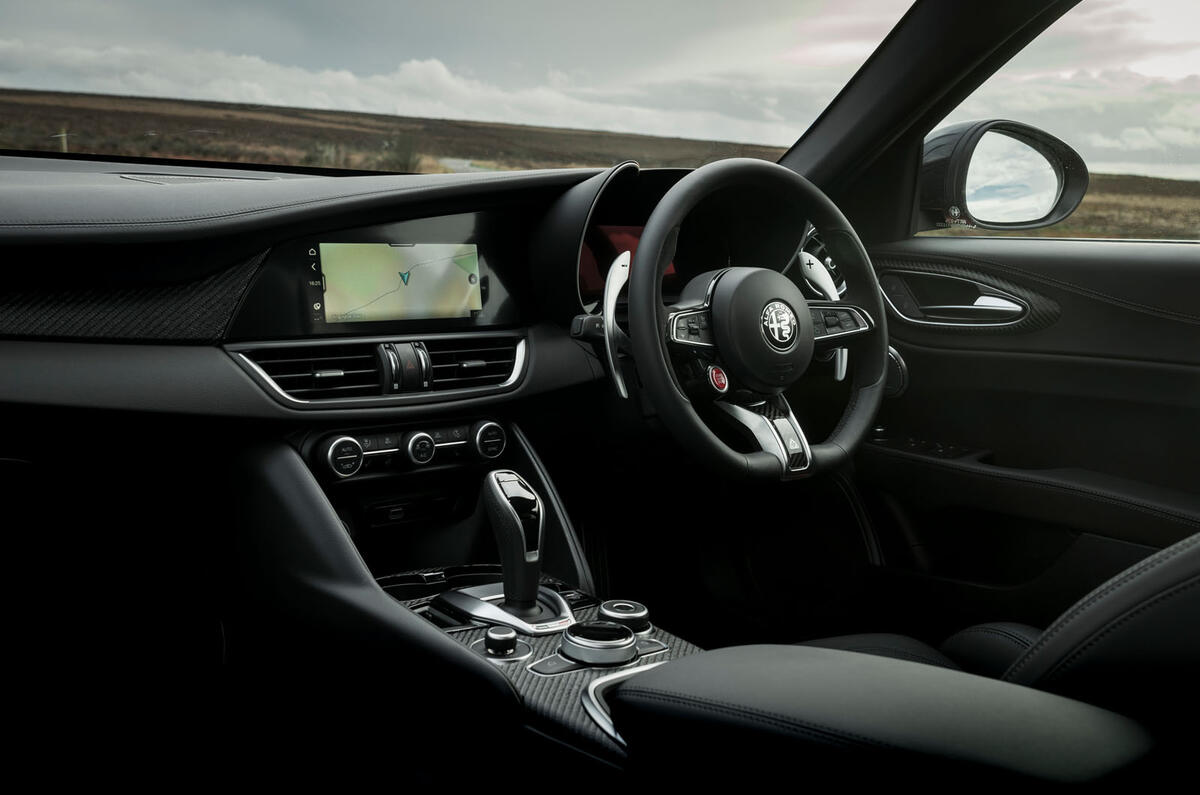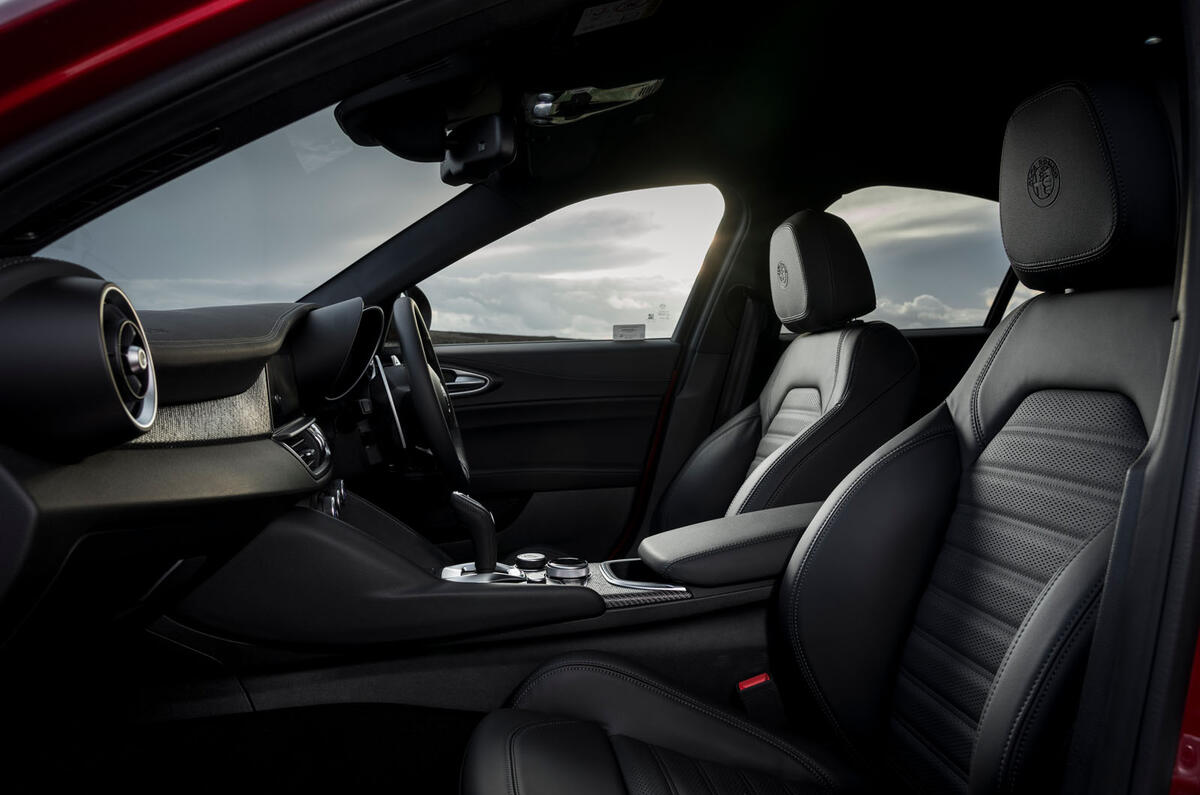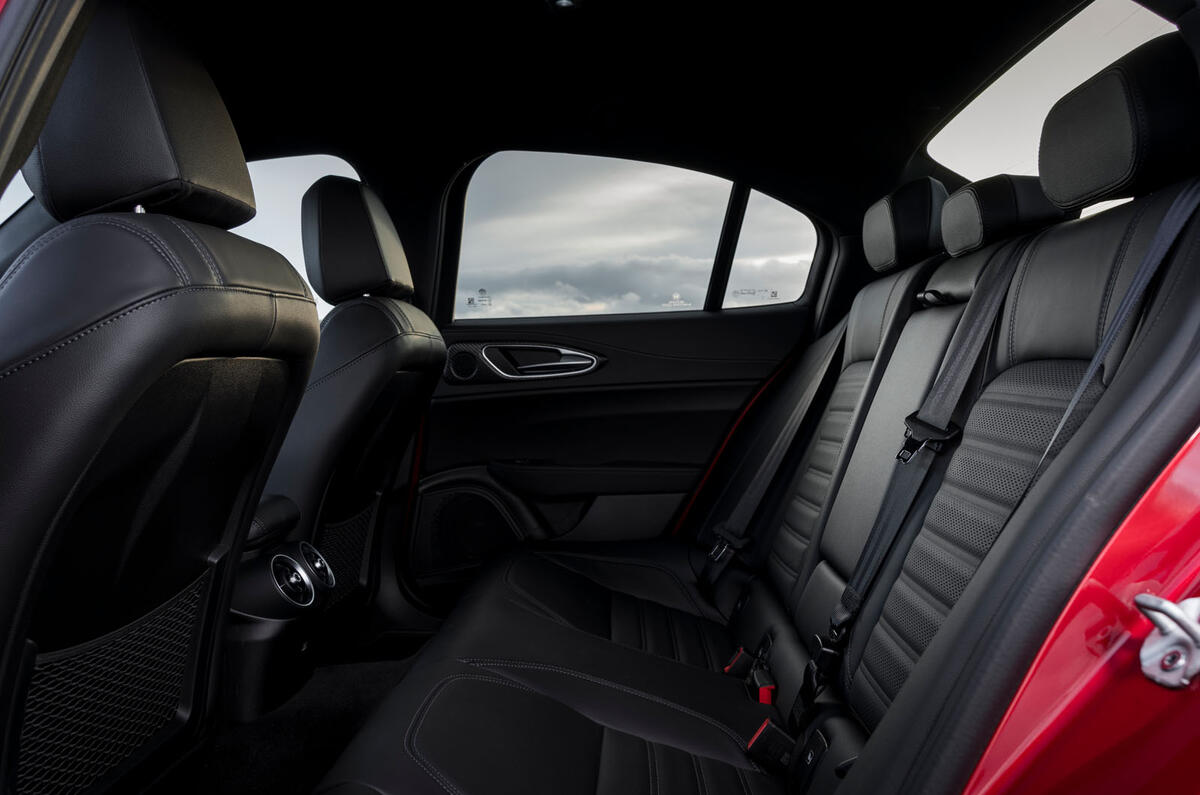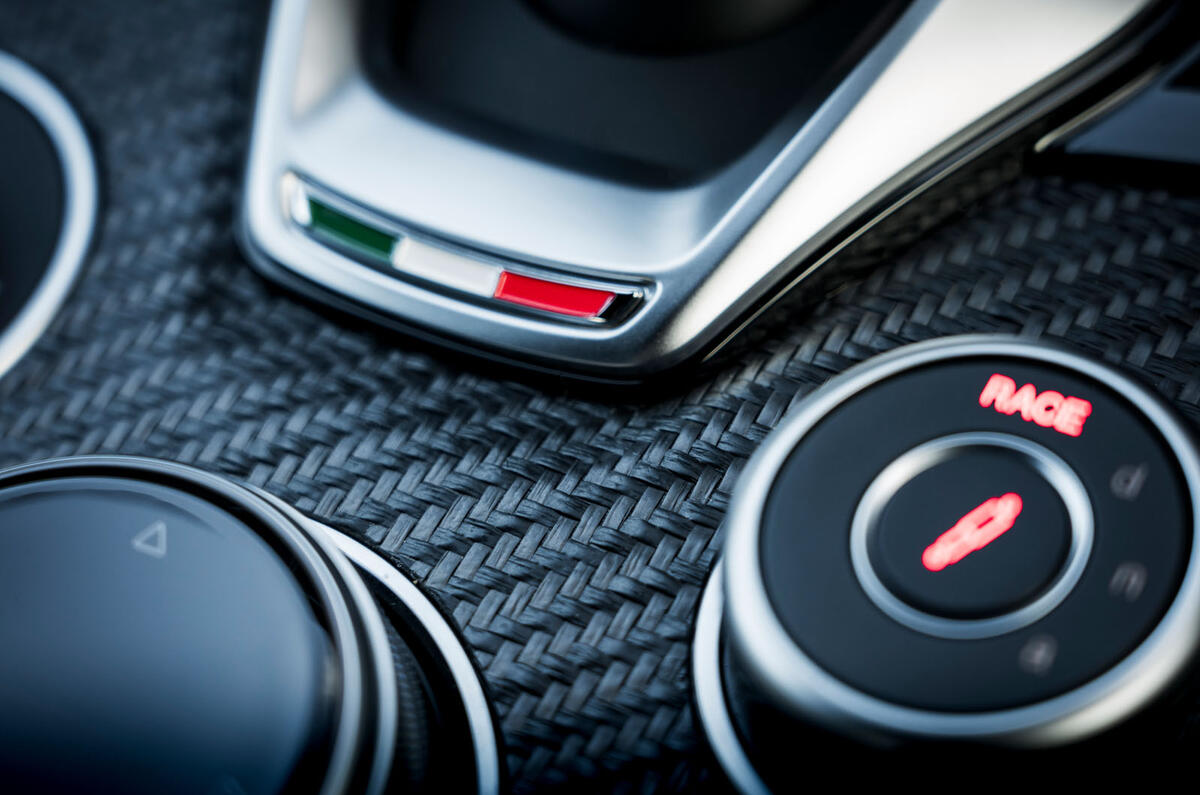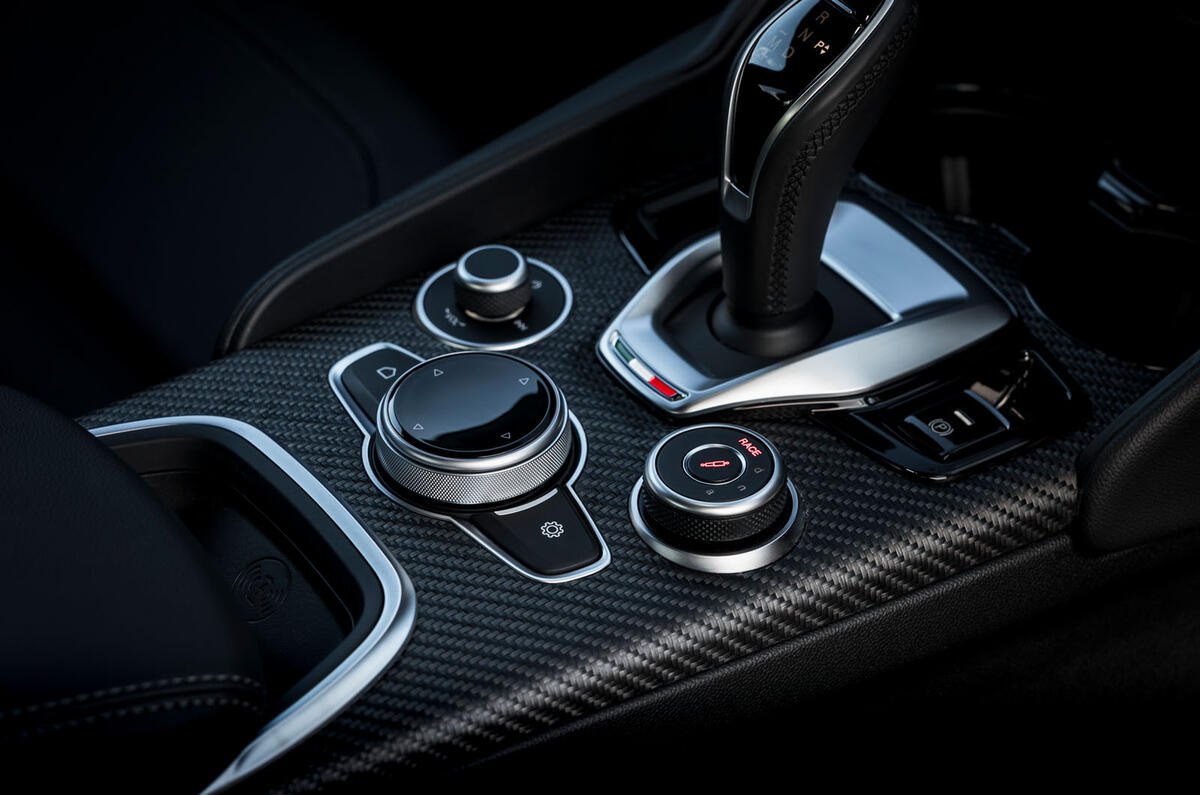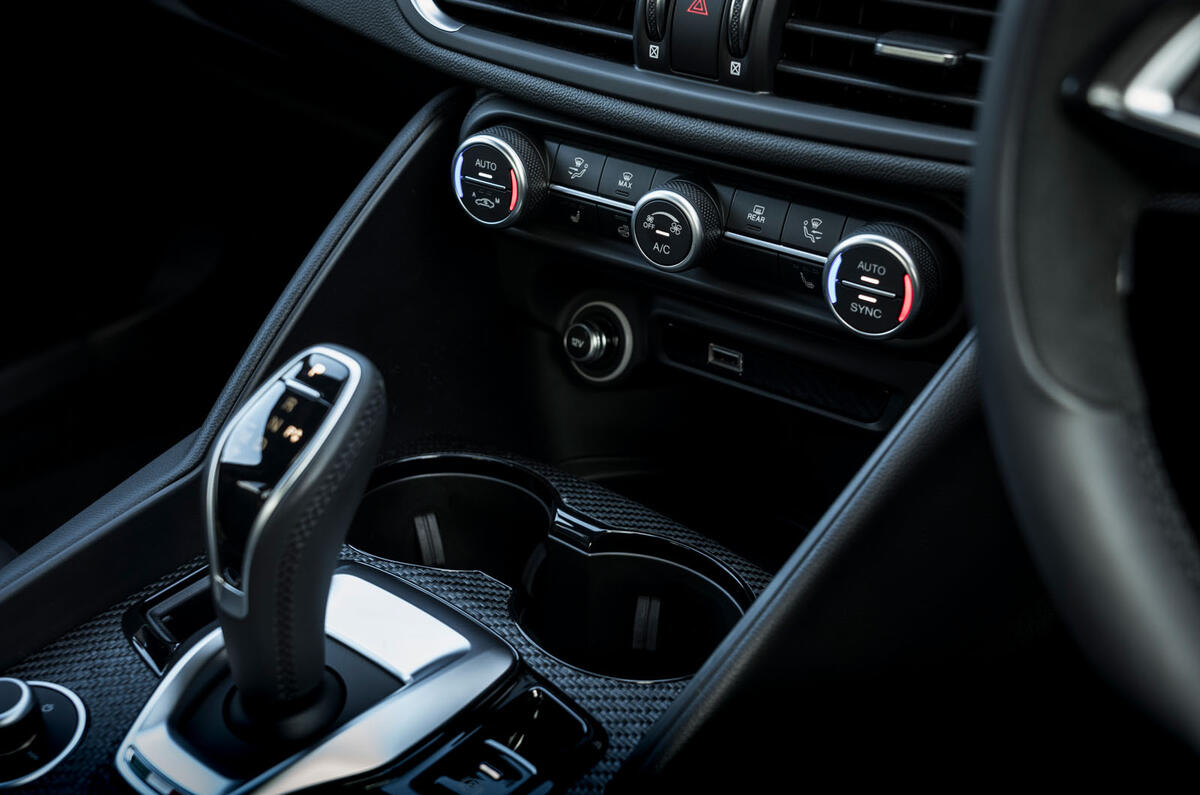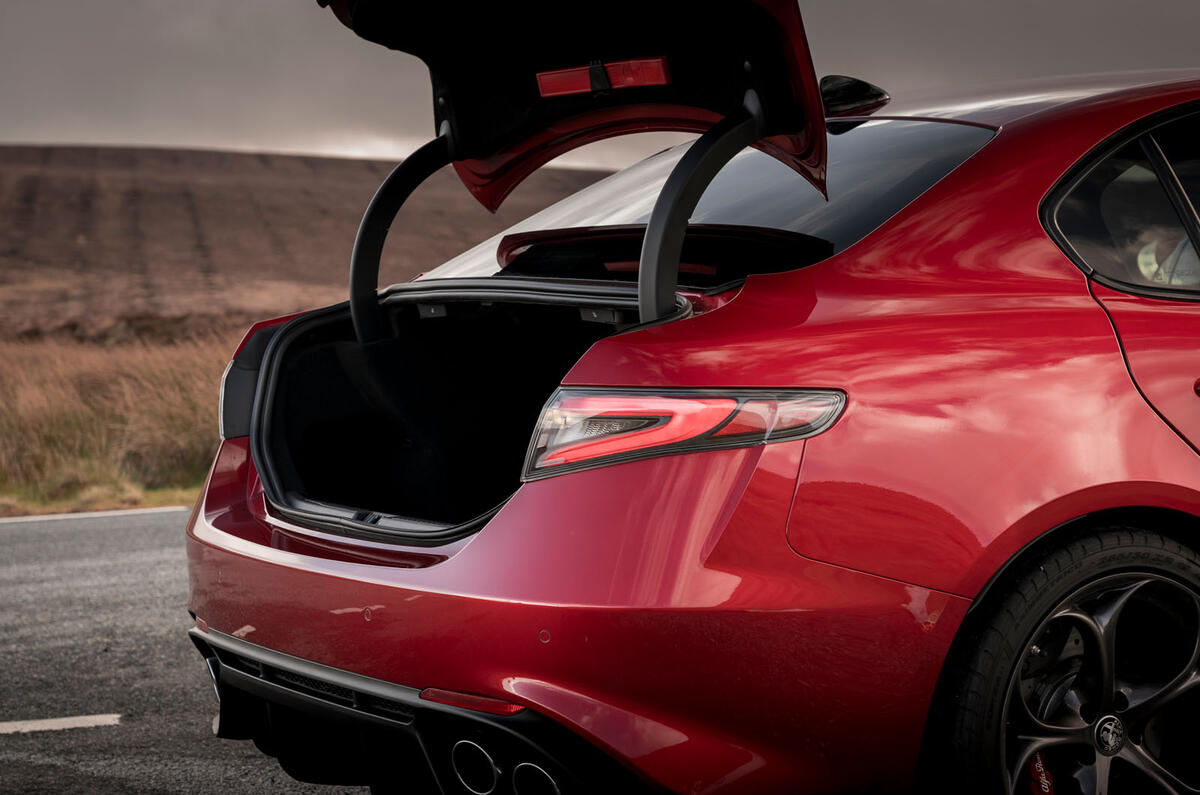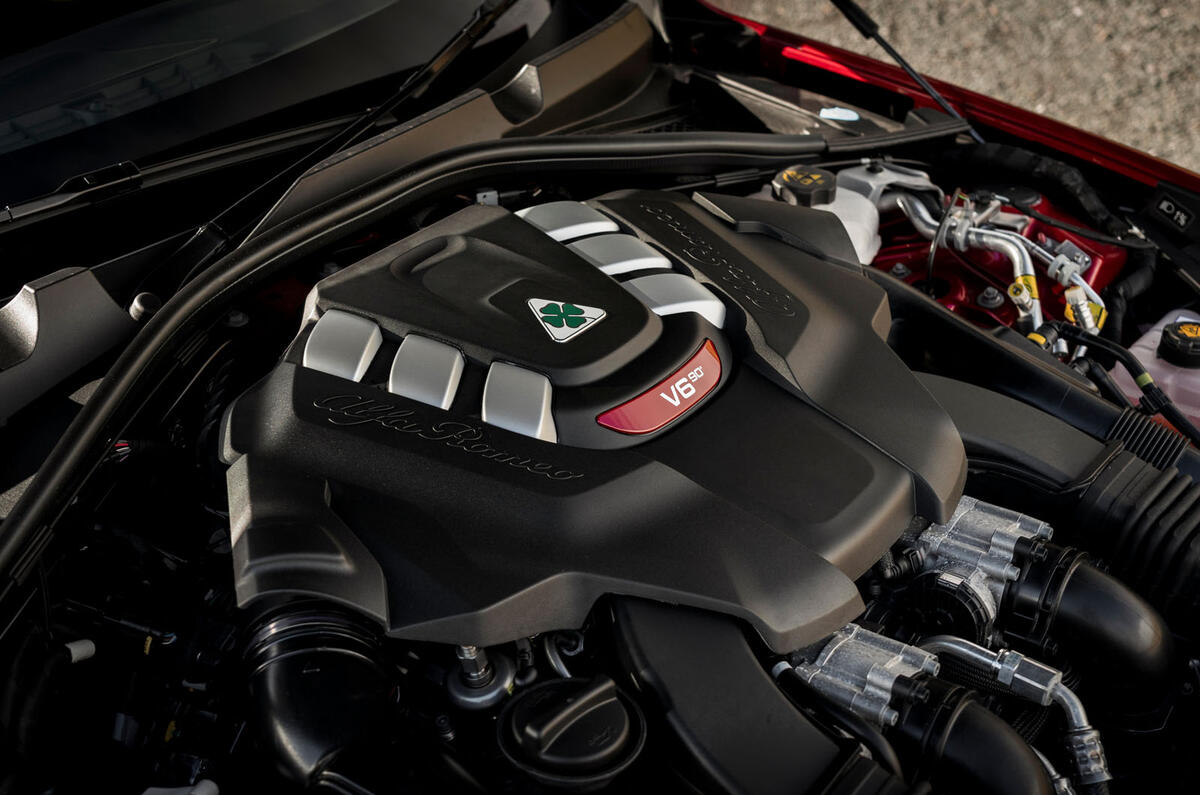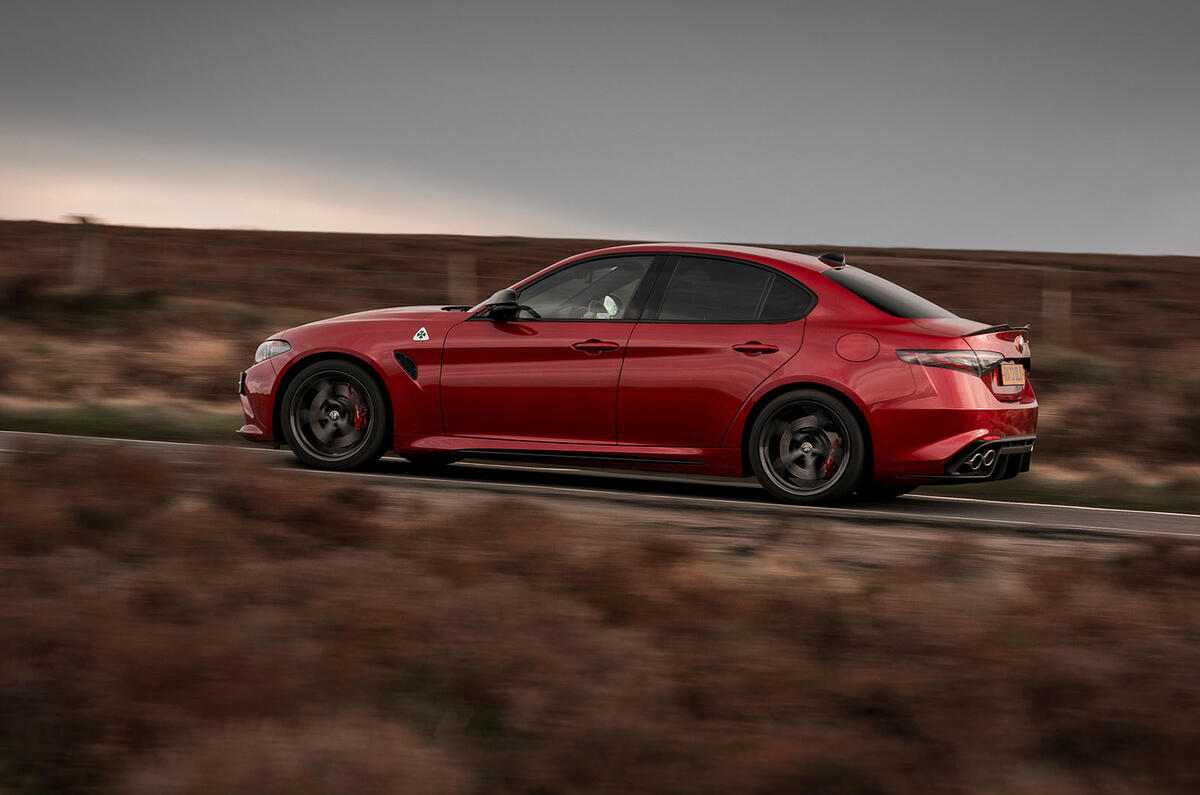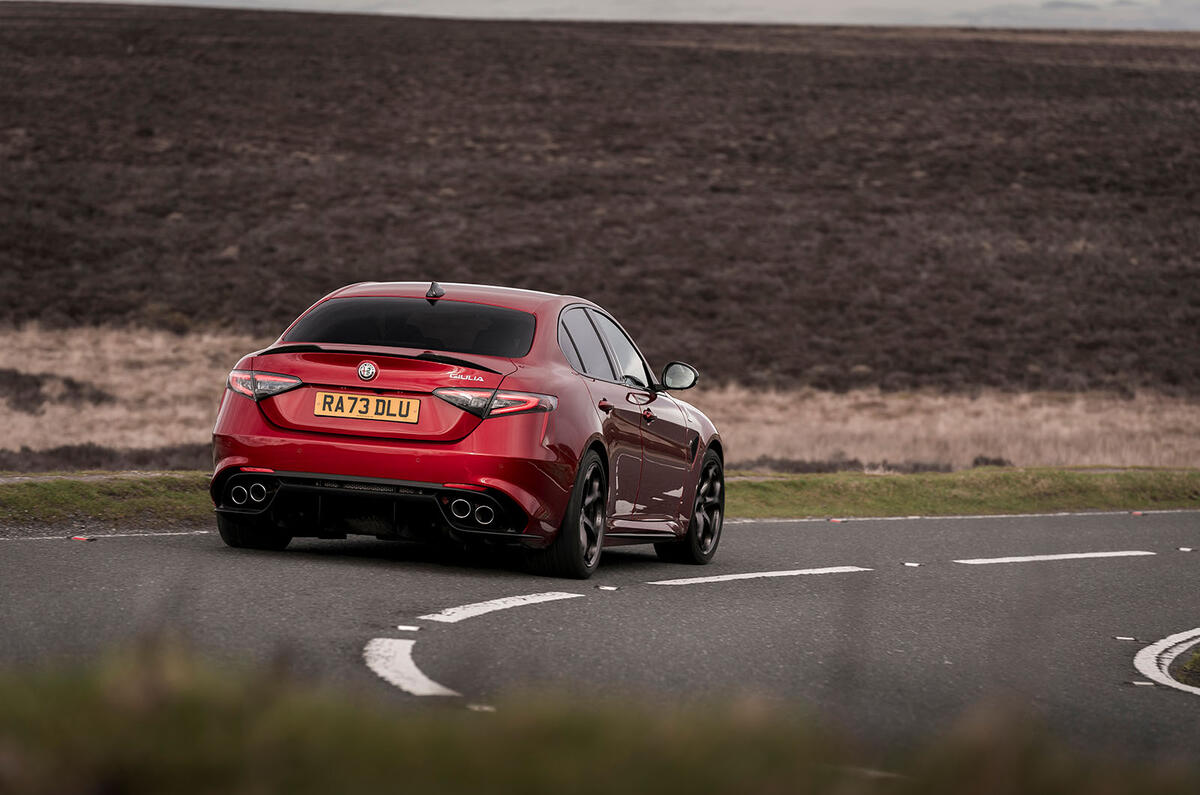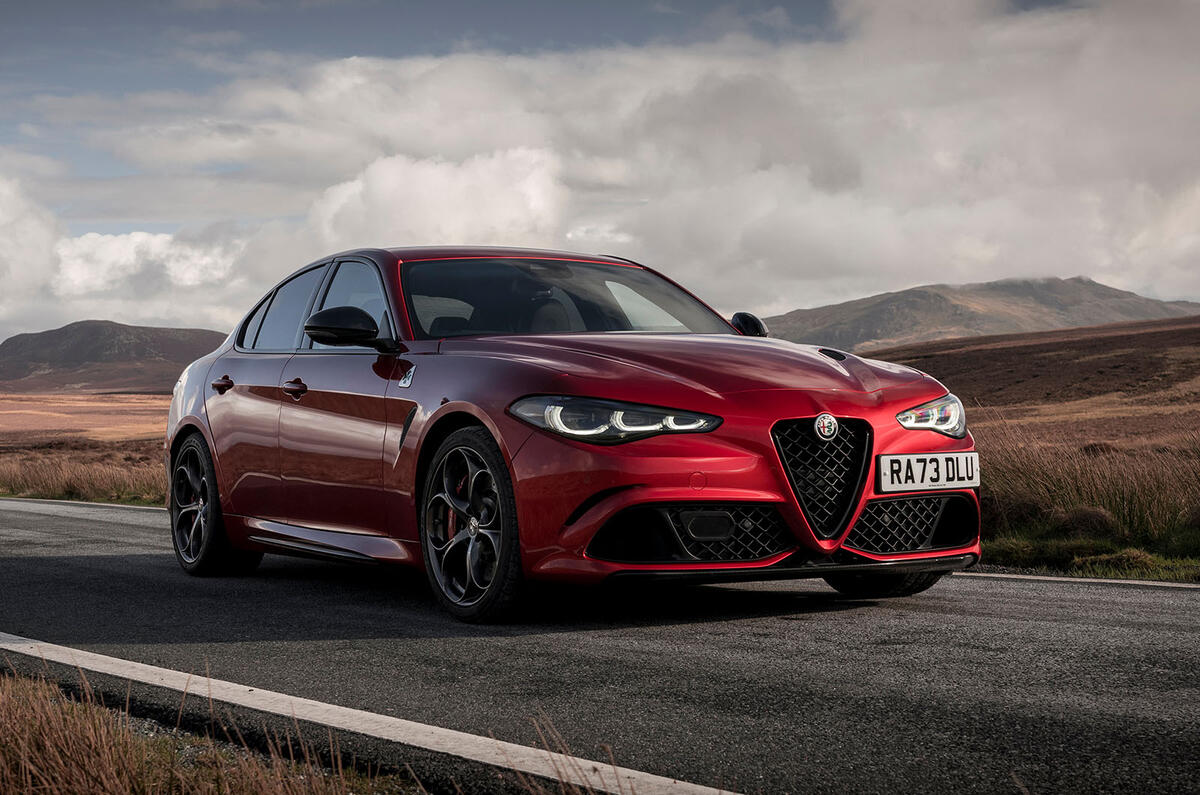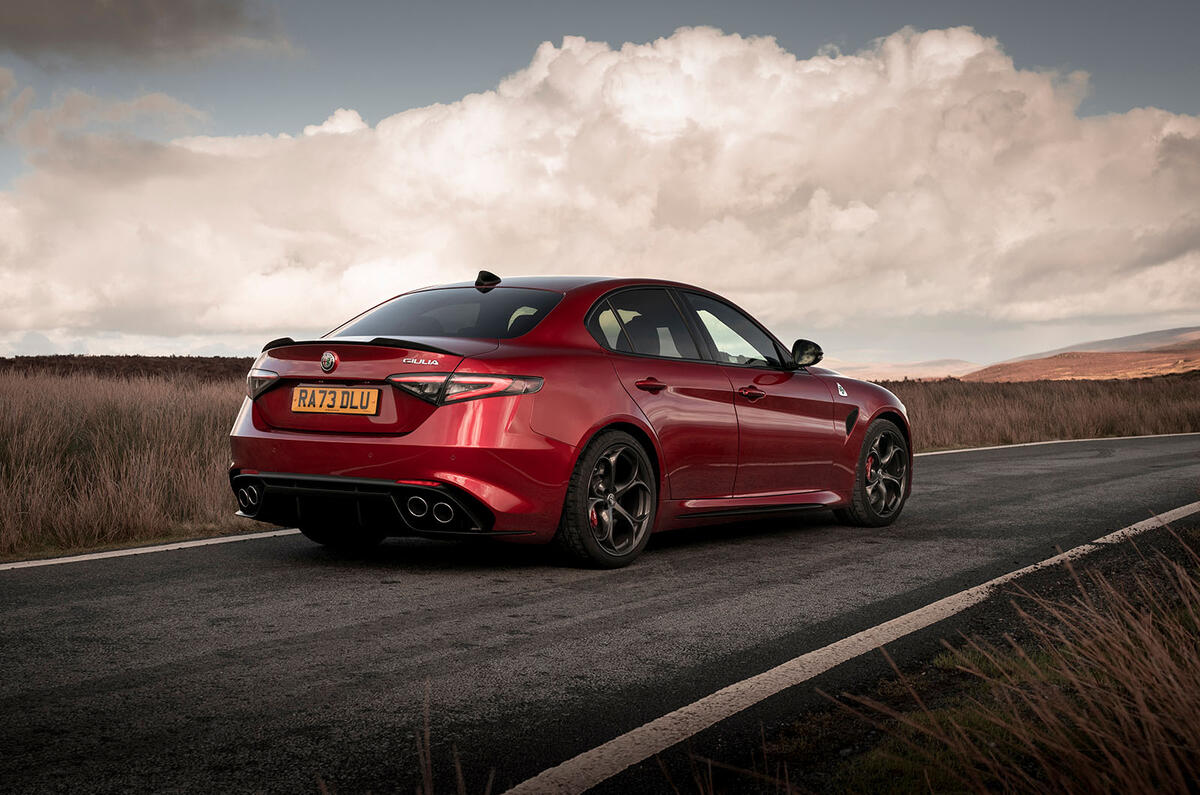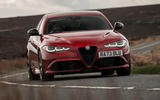The Alfa Giulia is certainly a relatively light, advanced and powerful saloon offering the kind of material construction, suspension technology and powertrain sophistication that not only brought the Quadrifoglio into the compact executive super saloon segment in a particularly strong position, but which has allowed it to remain competitive with its German rivals for years thereafter. There’s an argument that, given a Mercedes-AMG C63 is no longer V8-powered, the Giulia is more competitive than ever.
The car’s underbody construction is predominantly steel, with aluminium and composites used in places to save weight. All Giulias have aluminium suspension arms and subframes, cast aluminium suspension towers, aluminium doors and wings and a carbonfibre driveshaft.
The Quadrifoglio version adds a carbonfibre bonnet, and there’s an optional carbonfibre roof, as well as a carbonfibre front splitter with active aerodynamic functions.
Alfa Romeo quotes a kerb weight for the Quadrifoglio of 1660kg. In 2017 we weighed the car at 1700kg on MIRA proving ground’s scales, making it considerably lighter than the Mercedes-AMG C63 of the time, if less than the BMW M equivalent – though that car’s replacement, the latest M3, is 1805kg, so the Giulia is now respectively even more feathery than it used to be.
Holding up the other end of the Alfa’s power to weight ratio is a twin-turbocharged V6 which, following a 10bhp boost early in 2024, makes 513bhp at 6500rpm and 443lb ft from 2500-5000rpm – the same in the regular Quadrifoglio as in a 100th anniversary edition launched in 2023.



